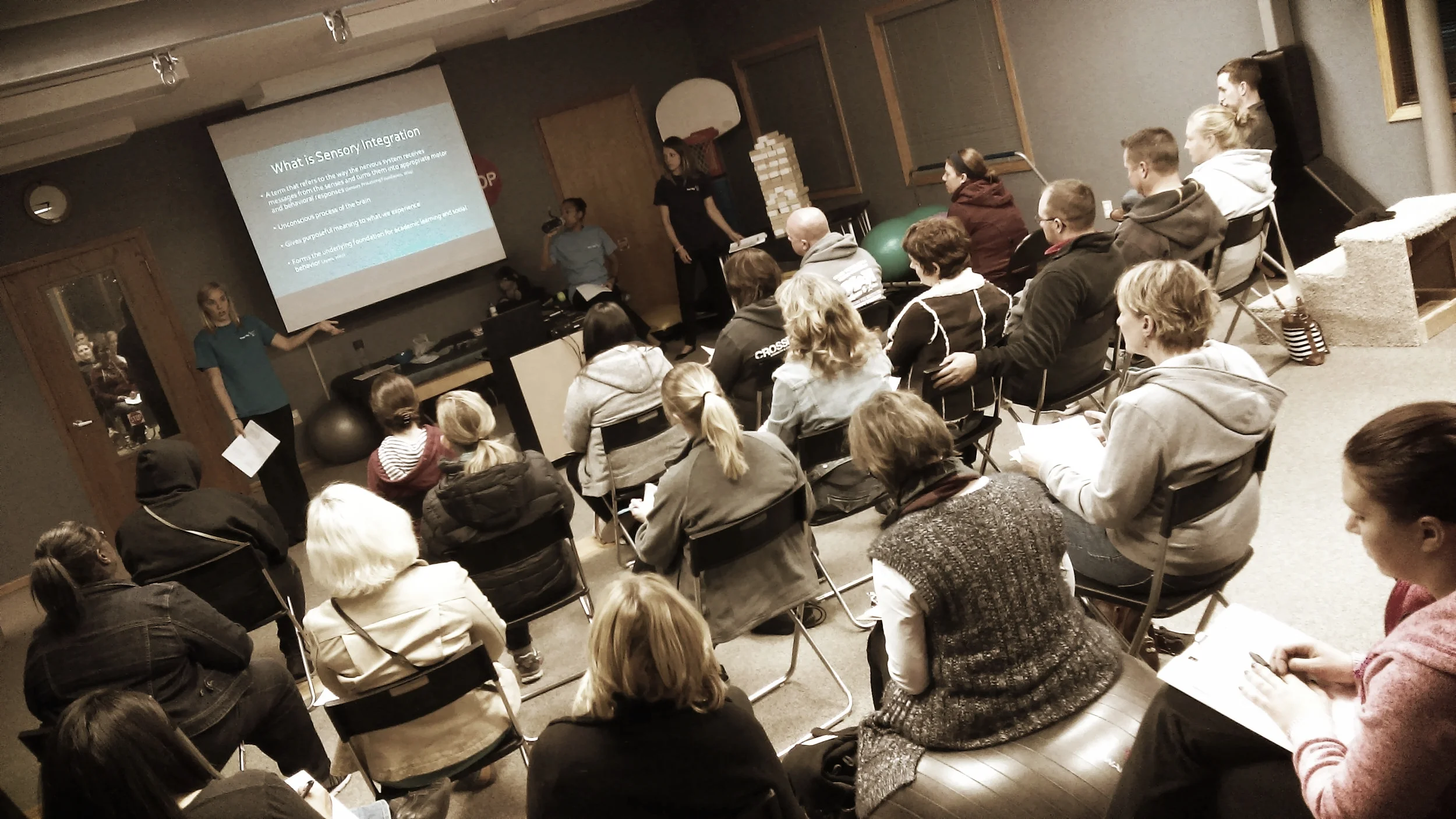OT Month: Sensory Spotlight
/What does sensory mean to you? As a pediatric OT, I often hear sensory associated with negative behaviors. Sensory integration is how we interpret and make meaning to every day experiences. So good news! Sensory is a good thing, we all experience it. Although, sensory needs displayed by kids are often shown as negative behaviors because these needs are interfering with their occupations (ie. learning, playing, social activities, etc). For example, the child in the classroom who is constantly moving in his/her chair, or the child who is always biting on his/her shirt sleeve or the child who is constantly touching others when standing in line. These children are showing sensory needs. Another thing that we all experience.
Sensory needs is our body seeking out a specific sensory input (or can be more than one). We seek this input to help our body feel good or help us focus. Let’s go back to the examples I gave. These children are all trying to keep their bodies focused or calm by seeking out movement (shifting in the chair), oral input (chewing on shirt) and tactile or deep pressure (touching others). Again, it’s not a bad thing to have sensory needs but the way these children are showing us can be seen as negative due to interfering with learning, peer interaction or other kids thinking it’s ‘weird’ what they are doing.
My job as an OT is to find more functional ways for children to get the sensory information that they are seeking. Before we go further into that I’d like you to think about your sensory needs you have throughout your day. How do you keep your body feeling good or focused? Do you start your day with a morning workout? When sitting at your desk are you tapping your foot or moving your chair back and forth? Do you like to chew gum or often find yourself humming? Do you fidget with your ring or another small item? All these examples give our body sensory information and the result is we can focus on completing paperwork, a to-do list at home or what our co-worker is presenting on and more. Also, these tools are thought of as functional ways to get sensory information and others do not notice these sensory needs we are seeking.
Now that you know a little more about your sensory needs let’s look back at children’s and how we can help them. First step is to watch the child. What are they seeking? We can identify this by their behaviors.
• Crashing to the floor, into others, bumping into the wall or furniture. This child is seeking deep pressure (or the fancier word, proprioceptive input). Here are some ways to give them this input in a more functional manner: pillow wrestling with giving big squishes, animal walks or wheelbarrow walking, wall or chair push-ups, lying on their stomach for a floor activity, giving them a big bear hug, using weighted items (ie. lap pads, blanket, vest), having them be your helper by pushing the laundry basket to the room. I could go on and on, but I have to keep this blog somewhat short. =)
• Constantly putting items in their mouth (non-edibles). This child is seeking oral input. Activities that promote sucking, chewing or blowing are ways to address this area. For example, chewing gum, chewlery necklace or including crunchy (crackers, pretzels) or resistive chew (fruit leather, bagels) for their snacks. Using straws, resistive waterbottle or edibles (dum dum suckers, jolly ranchers, mints). Blowing activities-bubble jug (large bowl with a little dish soap, blow through a straw), bubble wands, explore whistles, or when in the bath give a straw to blow bubbles in the water. Oral motor activities can be very calming and organizing to our body.
• Constantly touching others or items close to them. This child is seeking tactile input but deep pressure can also be helpful. Provide them with a fidget item to keep in their pocket, explore different tactile experiences throughout their day (ie. shaving cream-great bath time activity, dry media-rice/bean bin, finger paint, digging in the garden with you). Deep pressure can also be helpful (see the first example for ideas).
• Frequently moving in their chair during mealtime or in the classroom. This child is needing more movement to help them focus. Before sitting down at the table, engage in movement activities such as race around the house, jumping jacks, windmills-touch toes with opposite hand or spinning in a circle. After these activities, it can be helpful to follow up with deep pressure activities such as animal crawls or wheelbarrow walk. Having the child stand at the table can also be helpful or using a sit and move cushion (circle disc you place on the chair that allows the child to move back and forth).
I hope this has helped give you a better understanding of sensory needs in yourself, your own child(ren) and/or the children you work with each day. These are good starting point activities for children. All kids are different and react different to sensory information so if you are not seeing success or these activities as effective please talk with your OT or if you do not have one, call Therapy OPS to talk with one today!

